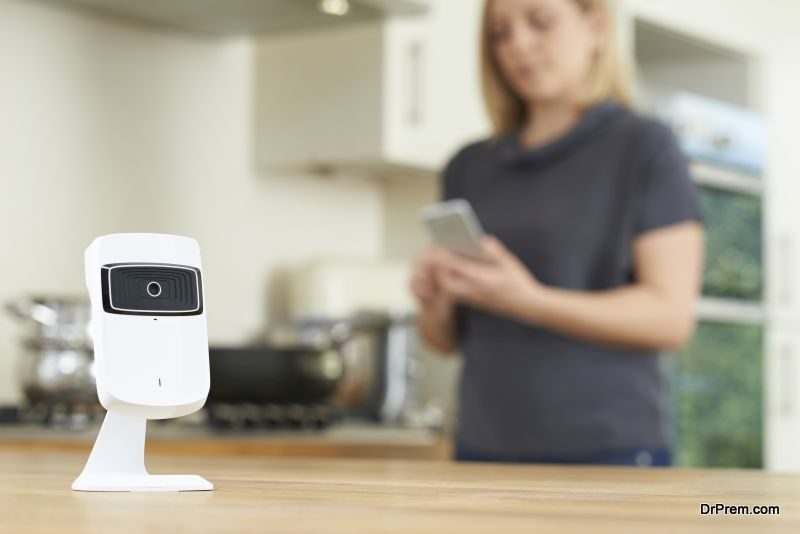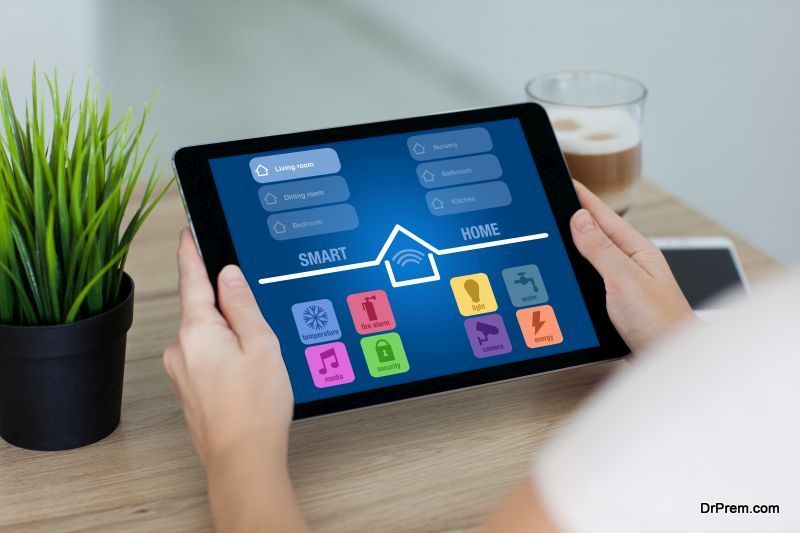We’re quickly moving toward an era where “smart homes” are the new normal. By 2020, it’s estimated that there will be more than 20 billion connected devices in the world, and the average home in the United States will have several interconnected devices on a single network. There are countless opportunities for this technology, simplifying our lives, making us more productive, and in some cases, even lengthening our lifespan, but there are also inherent vulnerabilities.
As you collect more and more connected devices to improve your home’s core tech, consider whether your smart home is truly safe—and take specific measures to guard against external threats.
The Vulnerability of Smart Devices
 Smart devices lead to new and more complex vulnerabilities than previous technological generations for three main reasons:
Smart devices lead to new and more complex vulnerabilities than previous technological generations for three main reasons:
· Increased opportunities
First, there’s the sheer number of increased opportunities for hackers to gain access to your information. If your home has ten connected devices, there are ten different ways to gain access to your data. And in some cases, those opportunities may seem innocuous—after all, nobody expects to be hacked through their garage door opener, but it does happen.
· Connectedness
There’s also an inherent vulnerability in the fact that many of these devices are interconnected with each other. A single flaw in a single device may allow a skilled cybercriminal to gain access to your entire home network, including your more sensitive devices.
· Lack of oversight
There’s also a distinct void of oversight in the fields of IoT and smart home technology. There aren’t many government restrictions dictating how these devices can be made and secured, nor are there many neutral third-party organizations that provide set standards of quality.
Easy Ways to Improve Your Smart Home Security
 Fortunately, there are some easy ways to improve your home security—or take a snapshot of how secure you currently are:
Fortunately, there are some easy ways to improve your home security—or take a snapshot of how secure you currently are:
1. Research manufacturer reliability
Before you purchase a new device, do some homework. Learn more about the company offering the device, and if they’ve produced similar devices in the past. Have they experienced any data breaches in the past? What are their security standards? Do they have a plan in place on how to respond to a cyberthreat, if and when it comes up? Do they store consumer data onsite? There’s much to learn here, so don’t rush your decision.
2. Add new devices prudently
Until better standards are set for IoT devices, it may be wise to limit the number of devices you acquire. It may make you feel cool to have a home full of connected devices, but it’s also going to make you vulnerable in the meantime. Ask yourself what value are these devices really providing you, and is that value worth the potential risk?
3. Use a secure home network
Because all your smart devices will be using the same network, it makes sense to invest more time and money into ensuring that network is secure. Choose a secure router, and high encryption standards, and make sure to rotate your IP addresses and passwords regularly.
4. Choose strong passwords
 Speaking of passwords, make sure you choose strong ones for your smart devices. Easily guessed passwords make it convenient for hackers to gain access to your devices, so use a combination of letters, numbers, and symbols in a long string of characters. Also avoid common sequences, like birthdays or names of people in your household.
Speaking of passwords, make sure you choose strong ones for your smart devices. Easily guessed passwords make it convenient for hackers to gain access to your devices, so use a combination of letters, numbers, and symbols in a long string of characters. Also avoid common sequences, like birthdays or names of people in your household.
5. Change your passwords regularly
It’s not enough to choose a strong password; you have to change those passwords regularly. Count on changing your passwords at least once a year, and preferably every few months or so.
6. Monitor for unauthorized activity
When possible, actively monitor your devices to watch for unauthorized activity. For example, if your smart thermostat takes an action you don’t remember initiating, or if you see a failed login attempt, it’s a good sign that someone is trying to enter your network. From there, you can take proactive action, changing your passwords and disabling certain features.
7. Keep your devices updated
 Smart device developers are constantly looking for flaws and vulnerabilities, and ways to mitigate those vulnerabilities. Accordingly, they issue software updates on a regular basis. Make sure you keep all your devices and apps updated to minimize your exposure to known risks and threats.
Smart device developers are constantly looking for flaws and vulnerabilities, and ways to mitigate those vulnerabilities. Accordingly, they issue software updates on a regular basis. Make sure you keep all your devices and apps updated to minimize your exposure to known risks and threats.
8. Read the news
Finally, keep an eye on the news. Most of the time, when a developer gets word that a security vulnerability in their device is being exploited, they’ll issue a press release and give customers information on how to remedy the issue or protect themselves. You can also watch your email for communications from your smart device providers.
These tips won’t protect you from every cyberthreat, but they should protect you against the vast majority of opportunistic hackers. The best way to protect yourself is to be better informed, so continue reading about the strengths and weaknesses of IoT and smart home technology, and always be willing to guard yourself against the latest threats.
Article Submitted By Community Writer




